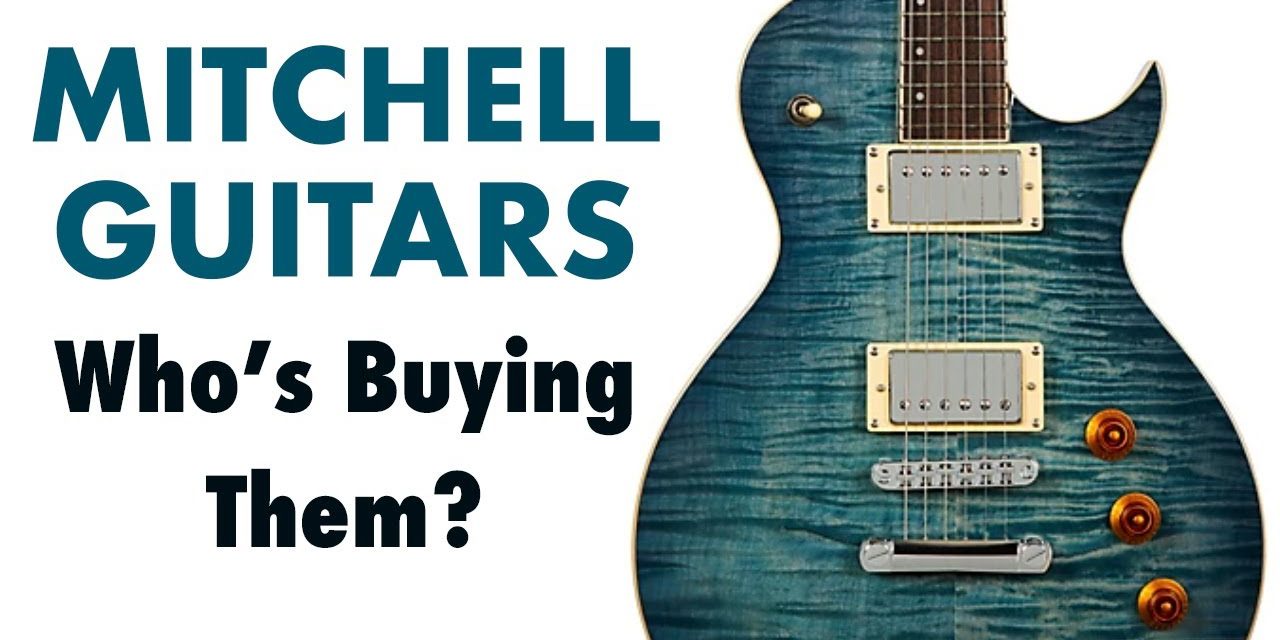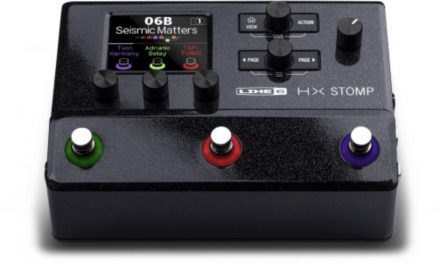Guitar Center owns Mitchell Guitars. As the owner, they can have Mitchell Guitars made overseas on the cheap and there’s no Fender or Squier or Epiphone to take a cut of the sale – Guitar Center makes the money. This is smart.
Guitar Center sorta hides the fact that it owns Mitchell Guitars. I don’t see any reference to Guitar Center on the Mitchell website. But if you ask the sales people at Guitar Center, they’ll tell you that Mitchell is made by Guitar Center.
Speaking of Mitchell, they have a YouTube channel… and they’ve put out 3 videos in the past 4 years. I mean, seriously… there’s almost no marketing and advertisement for these guitars. There are literally 10 year olds who manage to crank out a video per week. The bar is pretty low.
And if you asked most guitar players to name a professional guitarist who plays Mitchell, you’d most likely get a blank stare.
So without big name artists, without significant advertising and marketing, who’s buying these guitars? Based on my conversations with some folks in the business, there are three categories: Middle Aged to Older guys looking for a deal, brand new guitar players, and parents.
For the middle aged or older guys looking for a deal, Mitchell guitars look really good, but the setups range from decent to beyond terrible.
If you know how to adjust action, intonation, and maybe deal with sharp fret ends, Mitchell guitars can be a great deal, especially if you pick one up used or on sale.
For brand new guitar players who want something cheap that looks expensive, again, Mitchell guitars look great. You get a pretty top, unlike what you’ll find in a Squier in this price range, and it’s cheaper than an Epiphone.
But a lot of Mitchell guitars are sold to parents, looking to buy their son or daughter their first electric guitar, and they don’t know anything.
So the sales person can steer them to Mitchell and, say, Squier, and they haven’t heard of either brand, but the Mitchell guitar looks nicer, and the sales person assures them it’s a better deal. Is it?
Depends what you want. The sales person will then suggest to the parents that they pay for a setup. In my opinion, that’s a good idea, unless the player wants to learn how to do their own setups, which is an even BETTER idea.
There is another thing to consider – Mitchell guitars aren’t going to have much resell value. Not too many people get fired up when they find a used Mitchell selling for top dollar. To me, I couldn’t care less about that. But it is a point that people should consider.
I’ve made a point of playing a lot of guitars, including Mitchells. To me, the biggest issue is the setups – they really do range from decent to terrible. I don’t like the headstock designs on any of the Mitchells, but that’s subjective.
I think that with a good setup, Mitchell guitars look great and can sound good. I wouldn’t tell someone not to buy them – they’re fine. But I’d strongly suggest a good setup, unless it’s good out of the box.
Speaking of looks – Sam Ash, which recently decided to close my favorite music store in Clearwater, has their own store brand named Michael Kelly, and while I like the Sam Ash chain, can we just talk about their Les Paul copy shape compared to Mitchell?
I definitely gotta go with the Mitchell between this two. I mean, the Michael Kelly Les Paul copy shape is goofy. It looks like a bad drawing of a Les Paul.
If you came to this video expecting me to bash Mitchell, well, I didn’t. And if you came expecting me to say they are as good as two thousand dollar guitars, well, I didn’t say that either, because they aren’t. They’re designed to fit a specific part of the market, they do that decently, and they’re an option for budget-conscious players.
The problem with Mitchell guitars is how bad they are set up, in general. This is where we get into the single biggest problem with Guitar Center and Sam Ash. Let’s say you see a Mitchell guitar at Guitar Center, and you pull it off the wall and plug it in.
It’s $300, but it looks like a more expensive guitar. You start to play it, and the strings are buzzing all over the neck because the action is too low. Or it’s hard to play because the action is too high.
I can adjust the action on a guitar in 10 minutes. If you want me to also do the intonation and the truss rod, it’d take more time. But 10 minutes of my time might make the difference between that guitar selling in a week and in a year.
Adjusting the action isn’t the end of setup, because intonation and neck relief are important, but for a beginner or novice player, the action is more important. Why wouldn’t you take 10 minutes or less and just do a quick action adjustment?
One, Guitar Center is a chain and they don’t want to pay for an employee to do quick action setups, even though they might end up selling twice as many guitars if they do. And two, they charge an extra fee to do a setup, so in their minds they’d be losing money.
But you’re not making any setup money on a guitar that never sells. The novice player picks it up, tries to play it, says “Mitchell guitars suck because they’re hard to play,” and there goes your sale.
And if you think about it, this same concept also applies to every guitar under a grand that they sell. Some companies get this. Most PRS SE guitars are set up twice – once at the overseas factory, and once when the guitar arrives in the US.
I doubt Mitchell guitars are set up twice. I’ve played some of them that felt like they were never set up. C’mon, Guitar Center! These guitars are better than people think. They just need a 10 minute action adjustment.




